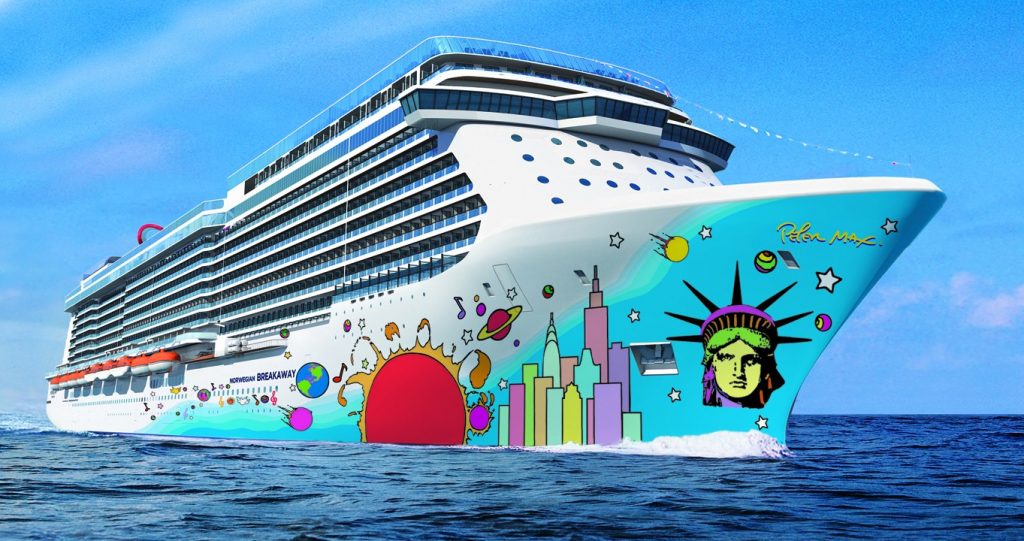
Health is everywhere: where we live, work, play, and learn, as I’ve often written here on Health Populi. While I’ve also analyzed the market for medical tourism over the past twenty years, this week I’ve learned that it extends to the cruise travel industry along with hospitals and clinics around the world.
I had the pleasure of meeting up this week with Hannah Jean Taylor, Manager of the Mandara Spa on Norwegian Cruise Line‘s ship, The Norwegian Breakaway. This vessel accommodates nearly 4,000 passengers who enjoy the services of over 1,600 staff members in the hotel, entertainment, and operational crews.
The Mandara Spa is one of the largest such facilities sailing on the seas, with a long list of services.
We know that consumers define personal health and wellness across many dimensions, based on the Edelman Health Engagement Barometer; namely, four aspects:
- My physical health
- My emotional health
- My physical appearance
- My financial wellness.
While most people would assume a spa deals with the third aspect — the physical, beauty and grooming — the Mandara Spa, and increasingly the spa industry, is working across other lenses of health.
 As part of the Norwegian Cruise Line family, The Mandara Spa is also operated by Steiner Leisure Limited, a company that has interests in spas, “By Land. By sea. By air. Online,” according to its website. The company seeks to give patrons a standardized, high quality experience across its delivery channels, so massage therapists are trained up in treatments that are the same on every cruise ship: “an aroma stone massage on the Norwegian Breakaway is the same on every other ship,” but individualized for each patron based on a full consultation before the procedure begins, Hannah explained.
As part of the Norwegian Cruise Line family, The Mandara Spa is also operated by Steiner Leisure Limited, a company that has interests in spas, “By Land. By sea. By air. Online,” according to its website. The company seeks to give patrons a standardized, high quality experience across its delivery channels, so massage therapists are trained up in treatments that are the same on every cruise ship: “an aroma stone massage on the Norwegian Breakaway is the same on every other ship,” but individualized for each patron based on a full consultation before the procedure begins, Hannah explained.
Beyond the typical menu of spa services, the Mandara Spa has a licensed Medi-Spa operating which offers advanced facial techniques to people seeking services like Botox, Thermage, and others that consumers seek to treat marionette lines, treatments for eyelids and the upper half of the face, among others. These treatments are performed by a board-certified MD — not the ship’s doctor (you know, the clinician you see when sea-sick, gut-sick, or otherwise ill). In addition, the Norwegian Breakaway also offers acupuncture, in this case provided by a married couple who are licensed in the technique.
We’re talking “medical” tourism here: there is a cadre of sailing passengers that books time on the Norwegian Breakaway who come on the ship with the purpose of getting treatments like Botox and acupuncture, with practitioners they trust and in a setting consumers appreciate and relax in.
And that’s a key point Hannah discussed with me: that relaxing before receiving a massage or an aesthetic facial treatment more often has a better outcome than when a consumer receives a treatment when stressed-out.
The repeat business of passengers who have previously been customers is significant. The Norwegian Breakaway has a section of spa staterooms, with a dedicated area of thermal spa suites, hydrotherapy pools, and other services available complimentary to passengers living in this part of the ship.
One unique aspect of the Norwegian Breakaway which is a convenience factor for this particular client segment is that the Peter Max-painted ship sails out of the Port Authority of New York City. Many repeat guests for spa services are from the greater New York area, so it’s a convenient port for them. NCL’s Norwegian Cruise Line’s loyalty program, called Latitudes, bolsters consumer commitment to booking future cruises.
A growing spa-going segment is men, and a new feature on cruise ships is men-only barbershops. These venues offer haircuts, of course, and also anti-aging facials, hot towel treatments, and other services delivered in proper barber chairs.
Once upon a time, a cruise ship’s daily activities featured cha-cha dancing, cooking demonstrations, and bridge tournaments. The Norwegian Breakaway has over a dozen meetings for passengers that are health related; a few examples are back pain and arthritis solutions, dealing with joint pain with acupuncture, and Dysport vs. Botox treatments. These sessions are led by physicians and clinicians who are licensed in their fields. Clinicians give passengers who have never visited a medical spa or alternative medicine clinic the opportunity to learn about these services in a relaxed environment, and also to socialize with peers who are keen on talking about health and beauty on the high seas.
That social aspect of health also extends to couples who seek health in pairs: Hannah noted that many of those who check into the spa cabins staterooms are also health-seekers. And the chances of making changes in one’s health behavior(s) are a lot greater when done with a mate, partner or friend than taking on that heavy lifting alone. (See Christakis and Fowler on Connected for more on the importance of social networks in health).
Health Populi’s Hot Points: The business of medical tourism is growing, on both cruise ships and on terra firma. Several factors underlie this trend: growing consumer-directed health care which requires people to pay more out-of-pocket, first-dollar costs for services; growing stress, pain, and sleeplessness among mainstream consumers, both men and women; and greater information access to health care alternatives, both online and offline through social networks and media outlets.
 The medical tourism market had long been focused on affluent consumers external to the US looking to take advantage of “the best healthcare system in the world,” America’s. In 2016, there is evidence that healthcare services abroad can be cost-effective and high quality for Americans who are enrolled in high-deductible health plans. In addition, some health plans in the US have identified Centers of Excellence abroad that enrollees can take advantage of for, say, high-cost surgical procedures.
The medical tourism market had long been focused on affluent consumers external to the US looking to take advantage of “the best healthcare system in the world,” America’s. In 2016, there is evidence that healthcare services abroad can be cost-effective and high quality for Americans who are enrolled in high-deductible health plans. In addition, some health plans in the US have identified Centers of Excellence abroad that enrollees can take advantage of for, say, high-cost surgical procedures.
The world is flat these days when it comes to consumers becoming truly consumer-directed in health/care. Flat, that is, unless you’re sailing on the seas, as Galileo knew all along…





 I am so grateful to Tom Lawry for asking me to pen the foreword for his book, Health Care Nation,
I am so grateful to Tom Lawry for asking me to pen the foreword for his book, Health Care Nation,  I love sharing perspectives on what's shaping the future of health care, and appreciate the opportunity to be collaborating once again with Duke Corporate Education and a global client on 6th May. We'll be addressing some key pillars to consider in scenario planning such as growing consumerism in health care, technology (from AI to telehealth), climate change, and trust -- the key enabler for health engagement or dis-engagement and mis-information. I'm grateful to be affiliated with the corporate education provider
I love sharing perspectives on what's shaping the future of health care, and appreciate the opportunity to be collaborating once again with Duke Corporate Education and a global client on 6th May. We'll be addressing some key pillars to consider in scenario planning such as growing consumerism in health care, technology (from AI to telehealth), climate change, and trust -- the key enabler for health engagement or dis-engagement and mis-information. I'm grateful to be affiliated with the corporate education provider  Thank you FeedSpot for
Thank you FeedSpot for